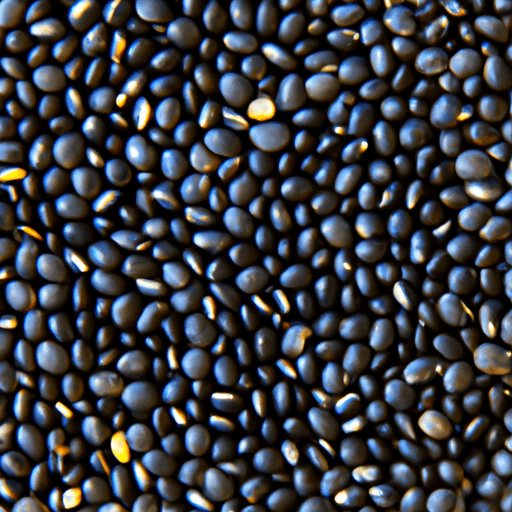Discover the Delightful World of Cooked Urad Whole
If you are a food enthusiast seeking to explore the diverse flavors and textures that the culinary world has to offer, then you’ll be delighted to discover the wonders of cooked urad whole. This versatile legume, also known as black gram, is a staple ingredient in Indian cuisine and packs a punch when it comes to taste, nutrition, and culinary applications. In this article, we dive deep into the captivating world of cooked urad whole, exploring its flavor profile, its role in cooking, its nutritional value, and some fascinating historical facts.
Taste and Texture
Cooked urad whole boasts a rich, earthy flavor with subtle nutty undertones. Its velvety texture adds a luxurious feel to a wide range of savory dishes. Whether you choose to enjoy it in the form of a hearty dal, a spicy curry, or a crispy fritter, cooked urad whole delivers a satisfying sensory experience that keeps you coming back for more.
Culinary Applications
When it comes to cooking, cooked urad whole lends itself to endless possibilities. It is often used to prepare traditional Indian dishes like Dal Makhani, a luscious lentil curry. This legume also takes center stage in the iconic dish “Dahi Vada,” where deep-fried lentil dumplings soaked in yogurt are garnished with tangy chutneys and aromatic spices. Additionally, it is used to make papads (thin, crispy lentil crackers) and adds a delightful touch to many South Indian breakfast preparations, such as idlis and dosas.
Moreover, cooked urad whole can be mashed and transformed into a thick paste to make delectable fritters or even used as a binding agent in veggie burgers and patties. Its versatility and ability to effortlessly absorb flavors make it a favorite among chefs and home cooks alike.
Nutritional Powerhouse
Beyond its delightful taste and culinary applications, cooked urad whole also brings a plethora of nutritional benefits to the table. This legume is a reliable source of protein, dietary fiber, iron, and potassium. It is low in fat and contains essential vitamins and minerals, making it a valuable addition to a balanced diet. Including cooked urad whole in your meals can contribute to better blood sugar control, improved digestion, and enhanced overall health.
Historical Significance
Cooked urad whole has a long and storied history, deeply entrenched in Indian culture. This legume can be traced back thousands of years, where it has been cultivated and consumed for its nourishing properties. In Ayurveda, an ancient Indian system of medicine, urad whole is valued for its strengthening and rejuvenating qualities. Today, it continues to play a significant role in Indian cuisine, connecting people to their cultural and culinary heritage.
Conclusion
Cooked urad whole is an extraordinary ingredient that holds an important place in Indian cuisine and beyond. Its unique flavor, diverse uses in cooking, impressive nutritional profile, and rich historical significance make it a must-try for any food lover. Whether you’re looking to explore new flavors or embrace the cultural heritage of Indian cuisine, incorporating cooked urad whole into your culinary repertoire will undoubtedly elevate your dishes and leave your taste buds craving more.
So go ahead, dive into the enchanting world of cooked urad whole and savor the magic it brings to your table!
Note: Before consuming any new food, especially if you have dietary restrictions or allergies, it is always advisable to consult a healthcare or nutrition professional.
Cooked Urad Whole
Origin: Urad whole, also known as black gram, is native to the Indian subcontinent. It has been cultivated in this region for thousands of years and is an important ingredient in Indian cuisine.
Common Uses: Cooked urad whole is a versatile ingredient used in a variety of dishes. It is commonly used to make dal, a thick and creamy lentil soup, in both vegetarian and non-vegetarian preparations. Urad whole is also used to make idli (steamed rice cakes), dosa (thin savory pancakes), and vada (deep-fried savory snacks) in South Indian cuisine. In addition, it is used to make various sweets like laddu and halwa.
Nutritional Benefits: Urad whole is highly nutritious and a good source of plant-based protein, dietary fiber, vitamins (such as folate), and minerals (such as iron, manganese, magnesium, and phosphorous). It is also low in fat and cholesterol. The high fiber content in urad whole helps promote digestion and aids in maintaining a healthy digestive system.
Unique Properties: Urad whole has a distinct earthy flavor and creamy texture when cooked. It has the ability to absorb flavors well, making it an excellent choice for soups and stews. The paste made from soaked and ground urad whole is known for its ability to ferment, which plays a crucial role in making soft and fluffy idlis and crispy dosas.
Historical Significance: Urad whole has been one of the staple ingredients in Indian cuisine for centuries. It is mentioned in ancient Indian Ayurvedic texts, which highlight its health benefits and medicinal properties. Traditionally, urad whole was considered to have a heating effect on the body and was believed to provide strength and nourishment. Today, it continues to be widely used in Indian cooking, both for its taste and its nutritional value.




Use the share button below if you liked it.
It makes me smile, when I see it.